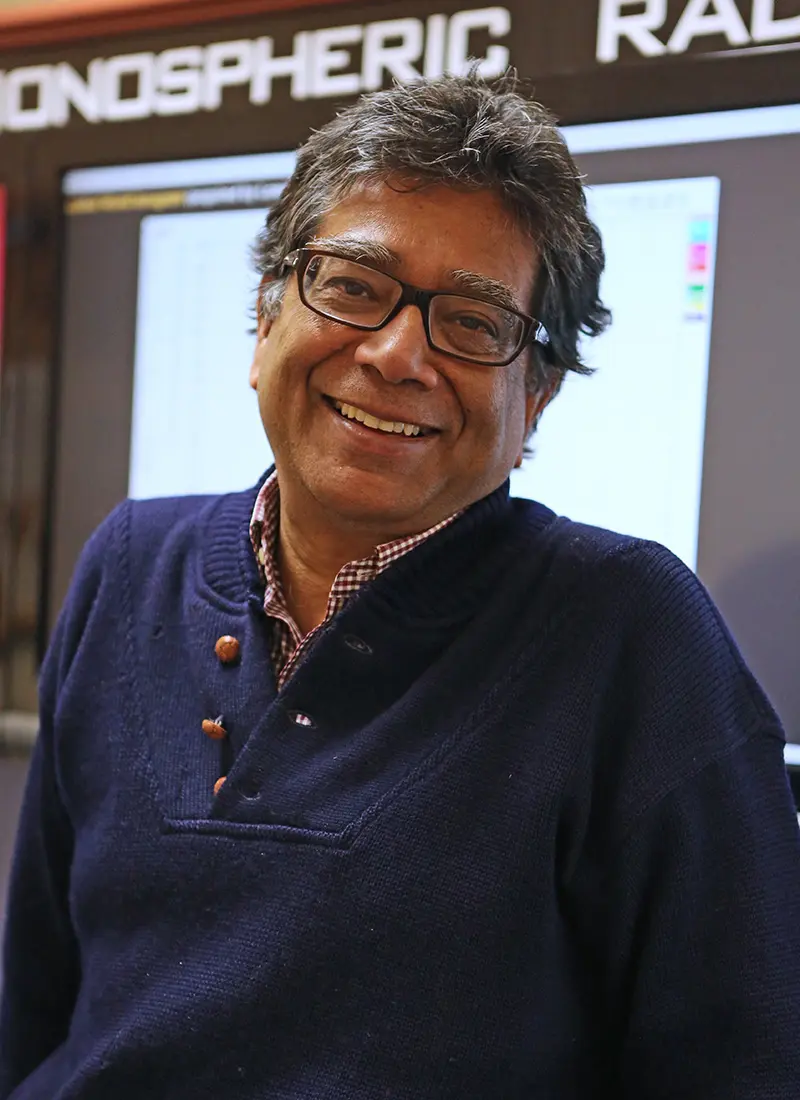If there’s a planet around a nearby star, physics Prof. Supriya Chakrabarti wants to take a picture of it.
Chakrabarti, who is director of the university’s Lowell Center for Space Science and Technology (LoCSST), is involved with several high-profile research projects aimed at exploring the frontiers of space – and finding out if there are other Earth-like planets out there that could support life. He leads a team of researchers, engineers and students in conducting studies of the Earth, stars, the Milky Way galaxy and the cosmos, and has successfully launched more than 20 space experiments aboard sounding rockets.
“My work gives me the opportunity to work with really smart people and together solve real, hard problems,” he says. “I can’t hit a baseball like Big Papi or throw a football like Tom Brady so I’ve devoted my life to the study of space.”
Chakrabarti can’t tell for sure when he first became interested in astronomy and space exploration.
“It is possible that something must have happened when my father showed me a small spot of light moving in the sky – Sputnik 1 – in 1957,” he recalls. “I also watched the first moon landing in 1969 on a TV through a large office window in the U.S. Information Service in Kolkata, India, and that left an awe-inspiring impression on me.”
Chakrabarti is a member of Project Blue, a consortium of non-governmental, non-profit space and research institutions that aims to design, build and launch by 2020 a small, lightweight, privately funded space telescope to detect habitable planets around our nearest stellar neighbor called Alpha Centauri.
“If successful, this would be our very first view of another world like our own,” he says. “And it would change forever our understanding of our place in the universe.”
NASA recently awarded Chakrabarti’s team a $5.6 million grant to develop and test an instrument system, called PICTURE C, which could potentially detect young, Jupiter-size planets orbiting other stars in the Milky Way. PICTURE C is scheduled to be carried aloft to the edge of Earth’s atmosphere in 2018, using huge helium balloons.
“Our ultimate goal is to discover Earth-like planets around sun-like stars capable of supporting life,” explains Chakrabarti.
Chakrabarti is also the principal investigator for UMass Lowell for LITES, the Limb-imaging Ionospheric and Thermospheric Extreme-ultraviolet Spectrograph. The instrument was built in the LoCSST lab to observe ultraviolet light in Earth’s upper atmosphere from orbit. LITES was launched in February and is now mounted outside the International Space Station, where it is gathering data while orbiting the Earth.
Chakrabarti mentors more than 50 undergraduate students from the Kennedy College of Sciences and the Francis College of Engineering for the SPACE HAUC project. The team’s goal is to design and build a small cube satellite that will be launched by NASA into orbit in 2018. The space agency has awarded the team $200,000 to develop and test a prototype satellite, called SPACE HAUC-1, which is designed to demonstrate the practicality of communicating at high data rates in the X band.
“SPACE HAUC-1 will be UMass Lowell’s first mission to actually go around the Earth. And it will do so many, many times during its lifetime, which could last a year or more,” says Chakrabarti.
Chakrabarti joined the UMass Lowell physics faculty in 2012. He received his Ph.D. from the University of California, Berkeley, in 1982.


